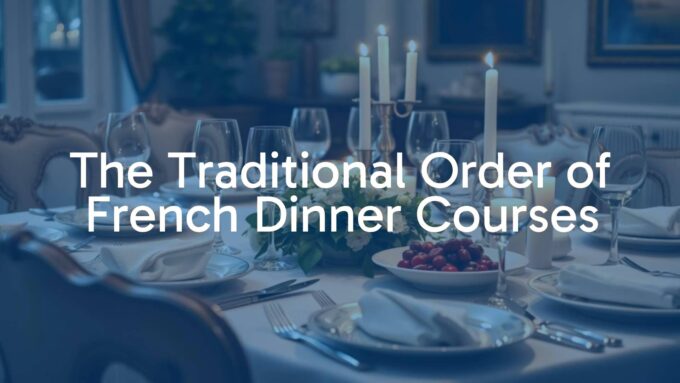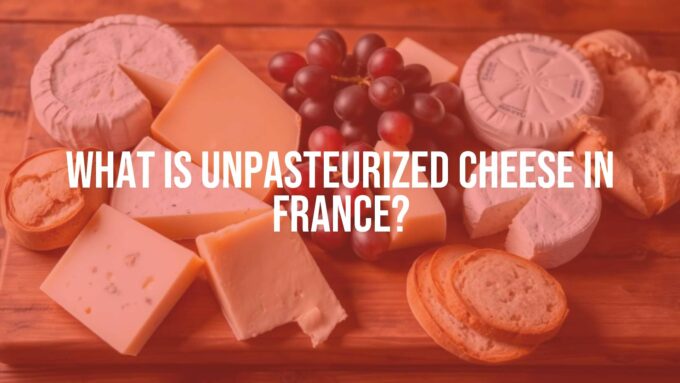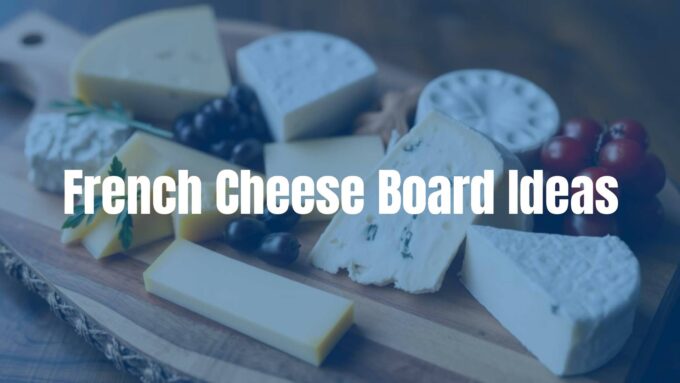France is well known for its romance, art, and especially for its amazing food. When you think of French cooking, sweet desserts often come to mind. But what makes a dessert truly French and traditional? At its core, a classic French dessert is a sweet dish that goes back many years in French cooking, using a careful mix of flavors, the best fresh ingredients, and beautiful presentation. These are not just sugary snacks; they’re part of France’s long food history and show a deep love for quality and tradition.
From simple fruit tarts to fancy, layered cakes, French desserts are all about elegance and style. People all over the world love them for their looks and also for their taste and textures. Whether you enjoy them after dinner or with an afternoon coffee, these sweets take you on a journey through France’s food history, one tasty bite at a time.

What Are Traditional French Desserts?
Traditional French desserts aren’t just recipes passed down over time-they are part of French culture. They show off influences from French history, local specialities, and a belief in doing things right. The French way of making desserts sets the standard for sweets and inspires many bakers and chefs. Every part of these desserts, from crispy pastry to smooth custard, is made with skill and care.
Many of these desserts have been enjoyed for hundreds of years, with each generation adding something new. They use local fruits, rich dairy, and high-quality chocolate, making the most of France’s farming. Creating and eating these desserts is part of everyday French life and makes celebrations even more special.
What Makes Classic French Desserts Special?
Certain features make French desserts stand out from others. One of the most important things is the way they’re made. French baking is known for following steps closely and being exact with measurements and temperatures. Getting things like choux pastry right or getting the crispy top on a crème brûlée takes patience and practice. It’s about doing things well, not making them complicated on purpose.
Using fresh, good-quality ingredients is also key. Many French chefs talk about “terroir,” or how the place where something is grown gives it its taste. This idea is important in dessert making too, where the flavor of fruit, rich butter, or creamy chocolate makes a big difference. How the dessert looks also matters; French sweets usually get careful decorating, neat piping, and a style that makes them seem extra special.

Where Did French Desserts Come From and What Do They Mean?
Every classic French dessert has its own history and region. Some started as simple snacks for country people and grew into something fancier. For example, the clafoutis comes from the Limousin area and used local cherries. The Tarte Tatin is famous too-said to have happened by accident when a chef turned a dessert upside-down!
These desserts are also tied to holidays and certain places in France. The Galette des Rois is for Epiphany, and the Bûche de Noël is a Christmas tradition. On Bastille Day, people share simple cakes and pastries at picnics. The pastry chef, or pâtissier, is a highly respected job in France, showing how important desserts are to French life and family gatherings.
Types of Traditional French Desserts
French desserts come in all shapes, flavors, and textures. You can find everything from rich cakes and creamy puddings to buttery pastries and airy mousses. Each region of France has its own favorites, adding to the wide mix of treats.
Whether you want something light or something sweet and filling, you’ll find something to like in French desserts. These recipes use many kinds of dough, creams, and baking styles, making each dessert unique in its own way.
Cakes and Tarts
Cakes and tarts are popular French sweets, enjoyed for both their taste and how nice they look. Tarts often use thin, crispy pastry filled with fruits, like the Tarte Tatin which uses apples cooked with caramel. The French Apple Tart has apples sliced thin and lined up in neat rows.
Cakes are important too. The Charlotte cake is lined with ladyfingers and filled with fruit mousse, while Financiers are small almond cakes, sometimes with chocolate or berries. There’s also the Opera cake, full of layers of almond sponge cake, chocolate, and coffee cream.

Pastries and Puffs
French pastries and puffs, like éclairs and profiteroles, truly show off the baker’s skill. Éclairs are long choux pastries filled with creamy centers and glazed on top. Profiteroles are round and can be filled with cream or ice cream, then topped with chocolate sauce.
Laminated doughs, like those in Millefeuille, create thin, crispy layers filled with cream. Palmiers, also called elephant ears, are made from sugared puff pastry rolled up and sliced. The Kouign-Amann from Brittany is a rich, buttery pastry famous for its caramel crust.
Custards and Cream Desserts
Cream-based desserts offer smooth, rich sweetness. Crème brûlée has creamy custard with hard caramelized sugar on top. Crème caramel is similar but has a soft caramel sauce on top after being turned out of the mold.
Pot de crème usually comes in small cups and is thicker, sometimes chocolate flavored. Floating Islands (Île Flottante) use poached meringue over custard sauce for a light but tasty dessert.

Cookies and Biscuits
French cookies are more than just snacks; they’re made for enjoying with tea or coffee. Madeleines are small, shell-shaped sponge cakes with a gentle lemon and vanilla flavor. Macarons are colorful cookie sandwiches made from almond meringue and filled with creams or jams.
Sablés are crumbly butter cookies, sometimes with chocolate. Financiers can also fit here-small almond cakes that are easy to eat anywhere.
Mousses and Soufflés
Mousses and soufflés are all about lightness. Chocolate mousse is fluffy but rich, made from whipped egg whites folded into chocolate. Soufflés rise high in the oven and have a soft, warm center.
Soufflés need to be served right away, before they deflate, which can make them hard to get just right. Both desserts celebrate French baking’s focus on simple ingredients made in just the right way.
Regional and Seasonal French Sweets
Many French sweets come from certain regions or use fruits and flavors from the right time of year. Clafoutis uses black cherries from Limousin. The Kouign-Amann is from Brittany and loaded with local butter. Calissons from Provence are almond-shaped candies with candied fruits.
Normandy desserts often use apples. Summer is for berry tarts, while baked goods like plum galettes are perfect for fall. From region to region and season to season, French desserts stay exciting and fresh.
List of Traditional French Desserts
Here’s a list of classic French desserts that have been enjoyed for years. Each one shows the best of French baking and a love for both taste and appearance. Let’s look at some of the most loved examples:
| Dessert | Description | Main Ingredients |
|---|---|---|
| Crème Brûlée | Creamy custard base with a crunchy caramelized sugar top | Cream, egg yolks, sugar, vanilla |
| Tarte Tatin | Upside-down apple tart with caramelized fruit | Apples, sugar, butter, pastry |
| Macarons | Almond meringue sandwich cookies with flavored filling | Egg whites, sugar, almond flour, food coloring, creams/jams |
| Éclairs | Oblong choux pastries with creamy filling and icing | Choux pastry, pastry cream, chocolate icing |
| Madeleines | Small shell-shaped sponge cakes, often with lemon | Eggs, sugar, flour, butter, lemon zest |
| Clafoutis | Baked custard with fresh fruit, usually cherries | Cherries, eggs, flour, milk, sugar |
| Profiteroles | Round cream puffs filled with cream or ice cream | Choux pastry, cream or ice cream, chocolate sauce |
| Île Flottante | Poached meringues floating on custard sauce | Egg whites, sugar, milk, egg yolks |
| Millefeuille | Layered puff pastry and pastry cream, topped with icing | Puff pastry, pastry cream, icing/glaze |
| Mousse au Chocolat | Fluffy chocolate mousse | Dark chocolate, eggs, sugar, sometimes cream |
| Galette des Rois | Puff pastry pie with almond cream, eaten for Epiphany | Puff pastry, almond cream (frangipane), egg |
| Financiers | Small almond cakes with buttery flavor | Almond flour, egg whites, butter, sugar |
| Canelé | Small cakes with caramelized crust and custard center, flavored with rum and vanilla | Milk, flour, eggs, sugar, butter, rum, vanilla |
| Paris-Brest | Choux pastry ring filled with praline cream | Choux pastry, praline-flavored cream, powdered sugar, almonds |
| Kouign-Amann | Rich Breton pastry with caramelized sugar and butter layers | Flour, butter, sugar, yeast |
| Religieuse | Two choux buns stacked, filled and glazed, looks like a nun | Choux pastry, pastry cream, icing |
| Palmier | Crisp, heart-shaped puff pastry cookies with caramelized sugar | Puff pastry, sugar |
| Beignets | Soft deep-fried pastries dusted with powdered sugar | Flour, yeast, sugar, eggs, butter, powdered sugar |
| Soufflé | Light, puffy baked egg dish with sweet flavorings | Eggs, sugar, flavorings (often chocolate or lemon) |
| Baba au Rhum | Yeast cake soaked in rum syrup, often served with whipped cream | Flour, yeast, eggs, sugar, butter, rum |
Highlighting Key Desserts
- Crème Brûlée: Smooth vanilla custard base with a crisp burnt sugar topping, enjoyed for the satisfying crack when breaking through the top.
- Tarte Tatin: Upside-down apple tart cooked with butter and sugar, showing how accidents can lead to new favorites.
- Macarons: Colorful, delicate almond cookies filled with all sorts of creams and jams, famous world-wide for their smooth shells and chewy centers.
- Millefeuille: Thin layers of puff pastry with pastry cream, topped with sweet icing.
- Kouign-Amann: The true “butter cake,” layered and caramelized, unique to Brittany.
- Soufflé: Baked dish that rises high and is light as a cloud, usually served right away so it doesn’t deflate.

Conclusion
French desserts are much more than simple sweets; they’re a big part of France’s food culture and history. Making and eating them brings people together, and each dessert-no matter how simple or complex-carries a story of tradition, care, and pride in good food. Whether you have a classic madeleine or a fancy croquembouche, you are tasting a bit of France’s love for quality, beauty, and flavor. These recipes continue to inspire people worldwide and remain a favorite way to end a meal or celebrate a special day.












Leave a comment